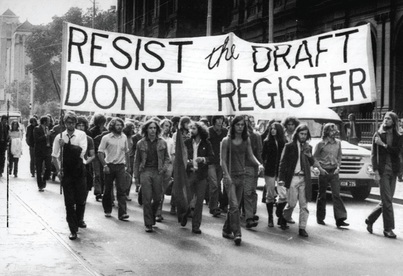
The first two groups arose in 1964-65 and consisted of the left-wing activists and college students. The activists opposed the Cold War and American intervention in foreign countries and most of the college students witnessed the southern civil rights movement and saw how the government had no problem ignoring injustice. These groups aimed to teach activists enough about Vietnam to be able to make others want to join the movement. Additionally, they wanted to normalize opposition since most were afraid to oppose the government.
During the second stage, those that were respected in the fields of politics, medicine, academics, entertainment, the press, and business began to announce their opposition to the war. They encouraged young men to resist the draft and to build opposition to help bring the war to an end. Influencers such as Muhammad Ali helped expand the opposition of the draft and thousands of young men were prepared to go to jail or face exile instead of going to war.
The third stage consisted of protests by antiwar veterans, one of the most memorable being when 800 men threw their combat medals over the fence surrounding the capitol. Yes, opposition to the Vietnam war was growing, but individuals were joining the movement in much smaller numbers. This is due to the fact that many were not willing to risk being arrested or getting injured.
The final stage developed tactics that attempted to construct a political force that would prevent Nixon's Vietnamization policy. Additionally, more antiwar organizations arose that did not require any major risks. These organizations and jobs along with antiwar candidates running for office gave the movement radio news outlets, documentary capabilities, and a news service. Law firms even began to defend the movement's work and networks of donors were created.
https://www.nytimes.com/2017/10/24/opinion/vietnam-antiwar-movement.html
https://peaceloveandbeyond.weebly.com/anti-war-movement.html
No comments:
Post a Comment